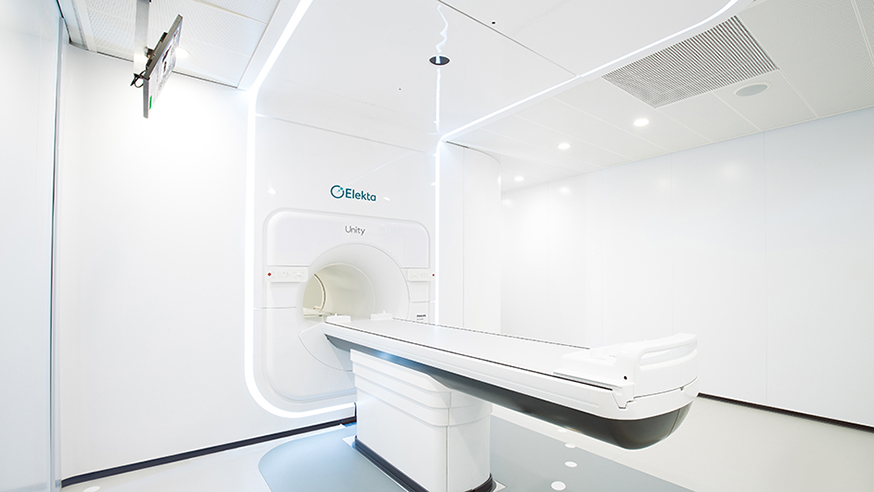
The Institute of Cancer Research, London, and The Royal Marsden NHS Foundation Trust are the first in the UK to install a state of the art radiotherapy treatment unit called an MR Linac. So far an exclusive club of only 20 healthy (non-patient) volunteers have been scanned to trial the machine, as part of the PRIMER study that will help test and optimise the images it produces.
Given the chance, how could you turn down the opportunity to experience this futuristic machine from the inside? I certainly couldn’t. That’s how I found myself making my way down the familiar corridors of our partner hospital, The Royal Marsden, about to take a picture of my lungs for what I can confidently say was the first time in my life.
Combining two technologies in the MR Linac
I work for the ICR as a Public Engagement Officer, and I’m fascinated by the way new discoveries and technologies make their way into clinical practice, and help patients. The chance to be scanned in the MR Linac would make me a small part of that process.
My MRI scan will help test and calibrate the equipment that the MR Linac will use to look inside patients. It’s the combination of two technologies – the MRI and the linear accelerator – that sets the MR Linac apart from other radiotherapy machines.
With its real-time imaging, clinicians will be able to much more precisely fine-tune the X-ray beams to direct the radiation precisely at the tumour, and will even be able to account for the tumour moving in the body when, for example, a person breathes.
A firm foundation
Before I could be scanned, I was carefully screened for any metal items or health issues that could be affected by the scan. I changed my clothes, and, my sparkly socks having failed to make it past the metal detector, padded barefoot into the large, white room that houses the MR Linac.
I’ve followed the process of the machine being built for almost as long as I’ve worked at the ICR. I remember the digging of the foundations, big enough for 24 Routemaster buses, and the dramatic airborne delivery of the enormous magnet for the MRI machine.
I remember the ICR receiving a huge grant from the MRC, the support of Elekta, who developed the technology, and the dedication of the researchers and clinicians who prepared for this installation.
All that work – it all came down to this, a machine made for very human bodies, like mine, slightly ridiculous in hospital gown and bare-feet. It was a humbling experience.
We collect the latest news and video about the groundbreaking MR Linac on a dedicated page.
Read more
Experiencing the scan
Luckily, I did not need to do anything – the radiographers looked after me extremely well, settling me into the slightly strange, stretched positon that a lung scan requires. I was warned that the machine can be loud – although you are able to listen to music to distract from this.
As they slid me into the machine, I felt the tips of my fingers emerge from the open end of the tube – there was no feeling of claustrophobia. And at first, as the scan started, I found it all too easy to relax and enjoy the chance to, as one supportive colleague put it, lie down at work.
But my mind soon wandered, and I found myself attempting to interpret the machine noises – could there really be a scientific reason to repeat the opening notes of Bah Bah Black Sheep, before moving on to CoCoCo sound?
Was I going to have to sit through the whole alphabet? Just as my arms and neck were starting to protest, I felt myself slide out into the open – the session was over.
Research for smarter, kinder radiotherapy
The images of my lungs will help to make the machine better, and in the end, will lead to a smarter and kinder treatment for the patients who will pass through the MR Linac.
I want to thank everyone who worked on the trial, and on developing this promising new treatment. I look forward to hearing the news of the MR Linac being used to treat a cancer patient for the first time – it’s heart-warming to know I might have played a very small part in making that possible.
comments powered by